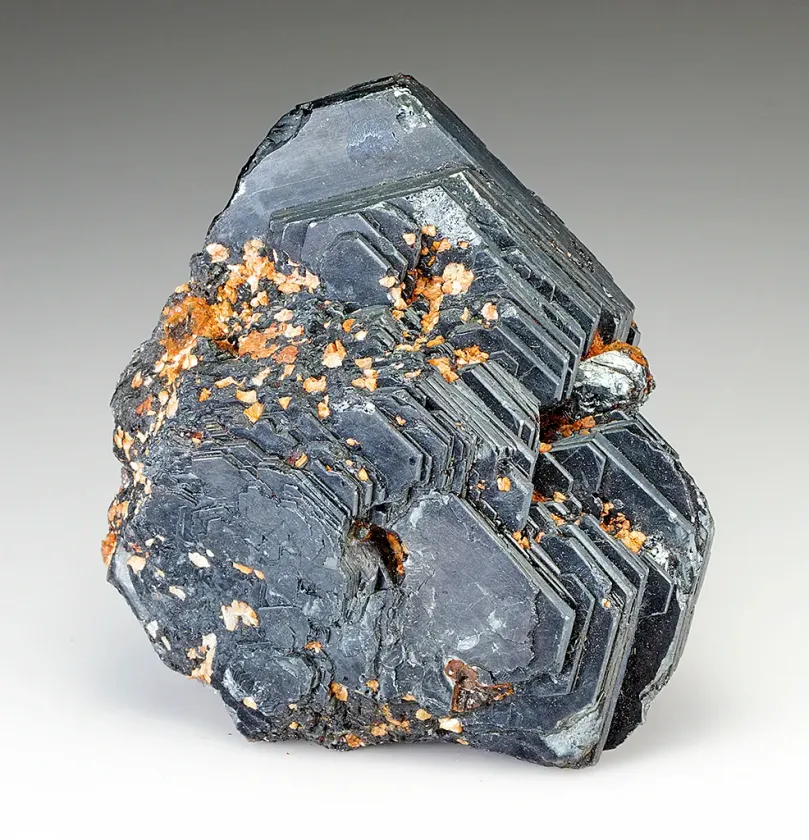
Appearance
Hematite is a unique color, ranging from metallic gray to silver-black. Its surface can have a strong metallic sheen that frequently resembles polished metal. When polished, the gemstone may also exhibit a reddish-brown hue called “red hematite.”
Geographical Distribution
Hematite is found in a variety of countries and geological formations and is extensively distributed throughout the planet. Hematite deposits can be found in a number of noteworthy locations and nations, including Australia, Brazil, China, India, Russia, the United States, and South Africa.
Hematite is found in many other parts of the world besides these five, such as Canada, Sweden, Ukraine, Venezuela, Iran, and Kazakhstan.
History
Because certain kinds of hematite have a crimson tint, the name “hematite” comes from the Greek word for blood, αἷμα (haima). Hematite’s color is frequently utilized as a pigment. The Latin lapis haematites, which dates back to the 15th century, gave rise to the English word “hématite pierre,” which was borrowed from the Ancient Greek αἱματίτης λίθoς (haimatitēs lithos, “blood-red stone”).
One of the first red chalk writings in human history was produced by this material. The Pinnacle-Point man may have employed the powdered mineral for social reasons when they first used it 164,000 years ago. There are also hematite remnants discovered in burials dating back 80,000 years. Found close to Rydno in Poland and Lovas in Hungary are red chalk mines from the Upper Rhine Linear Pottery culture, which date back to 5000 BC.
Metaphysical Properties
In metaphysical concerns, hematite is connected to anchoring, protection, and balancing energy. It is thought to improve concentration, increase self-assurance, and give steadiness. Wearing hematite jewelry is a common practice among those who believe in its therapeutic and energy qualities.

Chemical Composition
The chemical formula for hematite is Fe2O3, and it possesses a number of chemical properties that influence its behavior and features. Iron (Fe) and oxygen (O) atoms make up hematite; each formula unit (Fe2O3) has two iron atoms bound to three oxygen atoms.
Types
Additionally, hematite comes in a variety of forms. These include kidney ore, which is large, botryoidal (lumpy) or reniform (formed like a kidney); specularite, which is micaceous (flaky); oolitic, which is a sedimentary form made up of small, spherical grains; and red ochre, which is reddish-earthy.
Uses
Hematite is used in the following primary industrial applications:
- Iron Ore: One of the main sources of iron ore is hematite. For its iron content, which is collected and processed to create iron and steel, it is heavily mined. Steel and iron are essential components utilized in many different industries, including manufacturing, transportation, and construction.
- Steel Production: An essential component in the making of steel is hematite. It serves as the main feedstock for blast furnaces that consume iron ore. Melted iron is created in a blast furnace by combining iron that has been taken from hematite with other ingredients like limestone and coke (carbon). Many refining procedures are subsequently used to turn this molten iron into steel.
- Pigment and Paint Industry: The paint and pigment industry also uses hematite as a pigment. It can be used to create red and brown pigments due to its characteristic reddish-brown to black color, opacity, and durability. Applications for hematite pigments include paints, coatings, inks, polymers, and ceramics.
- Jewelry and Ornamental Use: For centuries, hematite has been utilized in jewelry and decorative items. It’s a popular choice for beads, pendants, and other jewelry components because of its metallic luster and dark color. Wearing hematite jewelry is common due to its earthy appeal and balancing and grounding qualities.
- Magnetic Applications: Some hematite varieties are good for magnetic applications because of their weak magnetic characteristics. Magnetic jewelry, such as necklaces and bracelets, is frequently made from magnetic hematite, sometimes referred to as hematine or “magnetic stones.” Even though hematite has modest magnetic characteristics, it is nevertheless used in some medical and magnet-related applications.
Table





